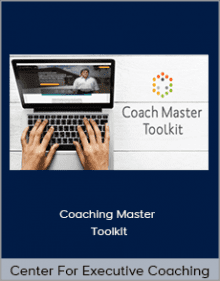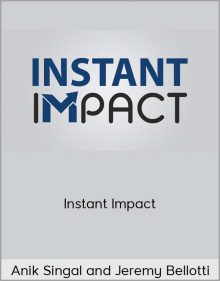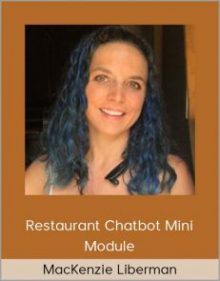John Romaniello – Captivating Copywriting
Original price was: $1,497.00.$142.00Current price is: $142.00.
Think about your last piece of marketing: the mostrecent thing you created to tell the world about what you do, how it’s special, and why they should work with you.
- Description
- Reviews (0)
- More Products
Description
John Romaniello – Captivating Copywriting

Page: https://www.captivatingcopywriting.com/onbrand
Check it out: John Romaniello – Captivating Copywriting
- How I once generated $250,000 for my company with a selfie (7 yearsafter it was taken)
- How a single email about olive oil made me $43,000 in a week.
- How an Instagram post about DenzelWashington and avocadoslanded me a book-writing contract
- and how writing a client spotlight in the form of a fairy tale brought in over $518,000 in coaching sales
Now, don’t get me wrong. Making money isn’t magic. Most decent marketers can create income on demand.

Now, it’s certainly not my most profitable piece of copy, but it’s one of my favorites.
Are you creating magic?
Are you casting spells with your words?
- Even if you don’t love marketing
- Even if you mostly focus on social media
- Even if you don’t consider yourself a writer
- Even if you’re overwhelmed managing all the moving parts in your business
You can craft brilliant word-art that does both…
- “My webpage doesn’t matter, all my clients are on IG”
- “I have a direct outreach strategy, so I barely market”
- “My audience loves me, so everything is easy”
- “I let my content do all the work”
Oooof. Okay.
- What happens when IG goes from “dying” to dead and you can’t use it to fill your programs any more?
- That’s good for low-end offers…for another 6-8 months. Then it’ll just be another annoying marketing tactic people roll their eyes at.
- “Die-hard” audience? Love it. Are you going to the next platform with them? Or are they gonna stay…just for you? (Aw, it’s cute that you think so.)
- You can have the most amazing content in the world, but if you’re not getting them to buy, you don’t have a business, you have a hobby.
These aren’t random predictions. This is empirical, data-driven forecasting: everything has a life-cycle.
Of those constants, none is more valuable than
copywriting.
And that is where so many people are dropping the ball.
Is your copy doing what it’s supposed to?
If we’re looking solely at the numbers, there’s a better than average chance it absolutely is not.
- What if you had a page you never had to stress about?
- What if your copy didn’t just tell people about your offer, but gave them a look inside of ? Just a bit?
- What if you had a place to send your audience that was more than just a website telling them they can buy or they can work with you?
- What if you had something different than everyone else, that told people how YOU’RE different from everyone else?
So why don’t you have it?
With most people, the problem arises when you start trying to communicate to your audience how much you can help them.
- The way your course can help them achieve their goals.
- Or how your systems can save them time and energy.
- Or how, with your guidance, they can avoid the mistakes you made, going further than they thought possible in less time than they imagined.
- Or how, through working with you, they can get the body of their dreams, the relationship or their fantasies, or the business they truly deserve.
We’re talking about some big, big changes in people’s lives.
That’s HARD.
You must fix this. Now, before Instagram withers, or the next algorithmic shift happens, or your ideal client goes somewhere else, to someone else.
The kind of copy that makes people feel heard, seen, understood, and valued—while falling just a little bit in love with you. (Or, at least the thing you’re selling.)


Copywriting has been the mainstay of my
If you haven’t put it together yet, this is a sales page. It is, beyond anything else, a sales page for a copywriting course.
- Textbook lawyers who wrote in stiff, stagnant legalese turned into captivating wordsmiths.
- Business owners who admitted to me upfront that they absolutely hated writing and soon fell in love with the copywriting process.
- Broke influencers who had huge audiences and were able to monetize when they added copywriting to the mix.
Copywriting is one of the most high-leverage, high-value skills in the world.
For your business and marketing, copy is the foundation upon which everything else rests.
If only they’d see it.
Writing Copy That Doesn’t Suck:
Here’s the thing to know:
Good copy makes people willing to buy.
- How likely is it that my words are being misconstrued? (Quite likely.)
- Can I be more clear? (Probably.)
- Can I be more precise in my word choice? (Almost definitely.)
Then, you know… just fix those things.
Why “Good” Copy Can Be
So, it’s easy to avoid copy that sucks, but let’s talk about the problem with “good” copy.
News Flash: following a copy formuladoes not mean you’ve written great copy.
Please don’t do this.
- Great copy does NOT sound boring and professorial; no need to be stiff and write like an academic to prove your worth.
- Neither should it sound smarmy and gross, so you do need to get hyper-aggro, like the so-called “high-ticket closer crowd.”
- And it absolutely should sound like you’ve been taking amphetamines all day, so for the love of all that is good and right with this world: with the exclamation points.
Copywriting Myth #1:
You have to be a master wordsmith to write great copy.
Absolutely untrue.
Most of the best (and most profitable) copywriters I know have no formal writing education.
However, learning to write copy made them better writers in other areas, as well as betterspeakers, podcasters, and presenters.
Copywriting Myth #2:
You need otherworldly powers of persuasion to create amazing copy.
Nope! Copywriting isn’t like door-to-door selling or hard sales.
You don’tneed reality-distorting charisma.
Here’s the secret: you really don’t need to persuade them to buy; all you need to persuade your audience
Be the first to review “John Romaniello – Captivating Copywriting”
You must be logged in to post a review.
-
Zuzka Light – Body Crush Workout Series
Original price was: $25.00.$10.00Current price is: $10.00. Buy now -
-
Tony Folly – The Branded Ecommerce Masterclass
Original price was: $2,997.00.$197.00Current price is: $197.00. Buy now -
Center For Executive Coaching – Coaching Master Toolkit
Original price was: $897.00.$107.00Current price is: $107.00. Buy now -
Alexandr Kratinov – Tricky 3D Ice Cream
Original price was: $29.99.$10.00Current price is: $10.00. Buy now

























Reviews
There are no reviews yet.